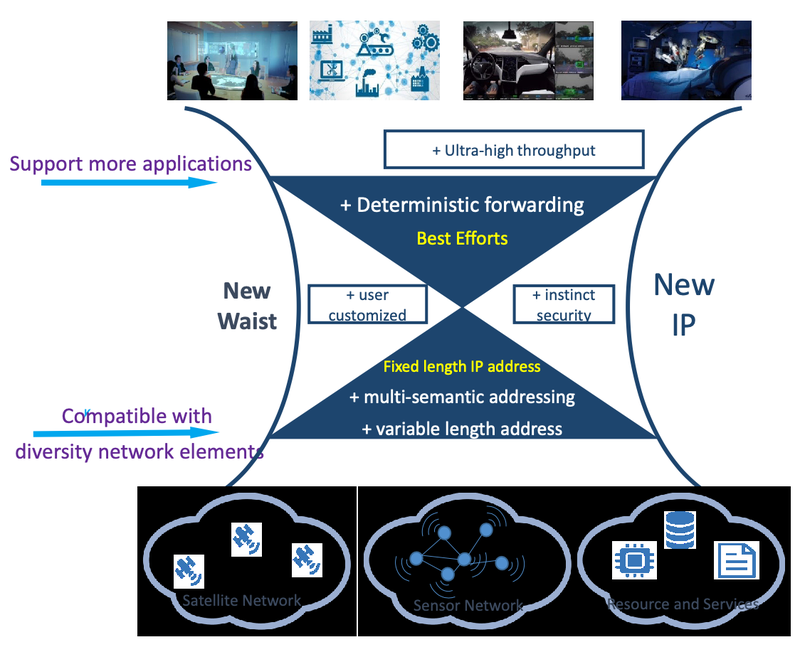
August 4, 2022
Industry NewsProposals at ITU-T for Internet Evolution Raise Serious Concerns; According to ISOC
Huawei, Chinese Carriers, and China want to Redesign a Prominent Part of the Internet, via a set of "New IP" proposals
by Elizabeth Drolet

Any new initiative has pros and cons, but according to ISOC (Internet Society), the “New IP” proposals are threatening and should be discussed further.
According to Huawei, “New IP” can be described “as a technology study initiative, driven by a vision on scenarios for utilizing Internet technologies in many facets of the future digital industry and society. As such a research initiative, it is centered on study areas that address aspects of the Internet data plane as well as its associated architecture, technologies, and protocols."
We caught up with Hosein Badran to give us the good, bad, and ugly of the “New IP” proposals.
Badran is a senior director for ISOC and leads the technology, policy, and advocacy initiatives in Internet access, infrastructure, and trust domains.
Why are you concerned with the “New IP” set of proposals?
Badran: Recent contributions to the ITU-T, particularly to SG13, have included proposals for new architectures for the global Internet. However, such proposals pose a significant threat to worldwide Internet architectures.
Specifically, the European Telecommunications Network Operators Group (ETNO), in an official contribution to the Chair of SG13, dated December 2020, identified the key concerns as follows:
- The development of a new Internet Protocol (provided there is a real need for it) would put at risk the high investments devoted to telecommunication network infrastructures, which might need to be replaced before being fully amortized, thus affecting the return on investment of the sector and putting their sustainability at significant risk.
- To avoid duplication of efforts, there should be no (or minimal) overlap in work done in different standards development organizations (SDOs): the ITU should not take on work on the IP architecture and the capacity of current transport networks being implemented by IETF and IEEE.
- Internet protocols and their architecture should continue to be developed in an open, multistakeholder, and bottom-up fashion—such as those led by the IETF and IEEE—and not driven by top-down processes, as in the ITU. Find more information here.
Also, the lack of interoperability with existing global architecture raises serious concerns. In addition, Innovation and standards should be incremental – evolution, not revolution.
These concerns reflect the ones shared by the Internet Society and by the IETF in the liaison statement.

What exactly are the “New IP” proposals?
Badran: Originally, "New IP" was a set of proposals submitted by Huawei with support from China Mobile, China Unicom, and CAICT to the ITU-T’s Telecommunications Standardization Advisory Group (TSAG) in September 2019 to initiate an ITU-T-wide project based on the New IP contribution in TSAG C-83. Furthermore, in January 2020, Huawei submitted a “New IP” proposal to the Focus Group on Technologies for Networks 2030. They proposed to develop new network protocols and architectures "by extending and redesigning the traditional IP [Internet Protocol]" to support new services for a "new Internet" by 2030.
At the December 2020 plenary session of SG13 and SG11, the decision was taken to not accept New IP-related questions as new work items and to stop discussing New IP at least until WTSA (World Telecommunications Standardization Assembly) in March 2022. However, since December 2020, elements of the New IP proposal continue to appear as new proposals in different study groups at ITU-T:
- March 2021: Proposal for a New Work Item on “Polymorphic Networking” in SG13.
- March 2021: Proposal for a New Work Item on “Immersive real-time communications” in SG13.
- June 2021: Discussion on forming a Focus Group on “6G Networking Technologies” based on outcomes of FG FN2030 at SG13 Workshop for Africa.
- September 2021: Proposal for a New Work Item on “Security guidelines of deterministic communication services for IMT-2020 networks and beyond” in SG17.
- July 2022: Proposal for a New Work Item on “Requirements of semantic-aware networking for future networks,” in SG13.
In March 2022, WTSA-20, a proposal for Resolution 50 on “Cybersecurity,” a requirement for “intrinsic security,” was introduced. In June 2022, at the World Telecommunications Development Conference (WTDC-22), an IPv6+ proposal for Resolution 63 on “IP address allocation and facilitating the transition to IPv6 deployment in the developing countries” was proposed.
Where should these discussions be taking place?
Badran: Internet protocols and their architecture should continue to be developed in an open, multistakeholder, and bottom-up fashion—such as those led by the IETF and IEEE—and not driven by top-down processes, as in the ITU-T.
Where can our community stay updated or find more information?
Badran: Information on the activities of ITU SG13 can be found here. Industry players are encouraged to become sector members of the ITU-T and engage in the development of international standards at the ITU-T. Participate in other Standards Development Organizations (SDOs), particularly the IETF/IRTF discussions and meetings. You can also find more information at Huawei’s “New IP” Proposal – FAQs.

Recent Articles
April 18, 2024 • Stories
“With Great Risk Comes Great Reward”
A (Tech) Road Less Traveled with ISC's CEO Jeff Osborn
"When you're a kid working with venture capitalists, everybody talks about taking their money and running to a tropical island…and nobody ever does. But I did," Jeff Osb…
Learn MoreApril 11, 2024 • News
NANOG 91: Things To Do + See in Kansas City
Check Out Landmark Attractions While Attending Our Next Meeting
Kick off the summer season with some mouthwatering BBQ and all that jazz. NANOG invites you to join us for our upcoming virtual and in-person meeting, NANOG 91, in Kans…
Learn MoreMarch 15, 2024 • NANOG TV
WATCH NOW - Experience a NANOG Meeting
Our last meeting may have come and gone— but the memories will last forever! Check out some familiar faces + learn what makes a NANOG meeting special.
Learn More


